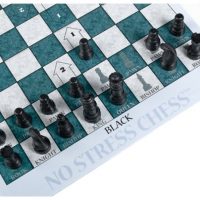IQ Tests for Children
Gifted testing: For lack of a better method, individual standardized tests are used to determine a person’s level of intelligence. Level of intelligence can be used to determine who qualifies for the label of gifted and in the case of children who qualifies for needed gifted services.
A problem educators face is how to narrow the pool of those children tested for gifted testing. Gifted testing is expensive for two reasons: the individual tests themselves are expensive and then there is the cost of the person administrating the test. Whether it is a school counselor or a psychologist, they are paid an hourly wage or a flat fee. Time is money and these tests take many hours to administer and then score.
In order to narrow the pool of those for gifted testing, many school districts use state testing scores as a way to find a pool of possibly gifted children. The problem with this is students are prepped for state tests. The test reflects more an ability to remember information taught than anything else.
When districts can afford it, I believe a test such as the Otis-Lennon School Ability Test (OLSAT) is a better choice as a screening tool for gifted because it tests reasoning and thinking ability…..
Read the rest of the article here: IQ Tests for Children
Should Your Child Know Their IQ Score?
Children who are tested for gifted services usually want to know their Intelligence Quotient (IQ). The child may ask this for several reasons. They may want to compare scores with their friends, bolster their self-esteem or discover whether or not they have pleased their parents.
Unfortunately, it is not unusual for parents to purposely or inadvertently put pressure on the child prior to the test, resulting in an anxious child waiting to know the results. As a matter of routine students are told how they perform on academic tests but the IQ test should be handled differently by parents and the school.
Why a parent should not tell their child their IQ score:
Even if a student is instructed not to share their IQ results with others, they often will share anyway. Doing so may inadvertently set the child up for ….
Read the rest of the article here: Should you tell your child their IQ score?
Testing for Creativity
Many people will be surprised to know you can actually test for creativity. As a teacher of 16 years I worked with and tested many students, some were creative and gifted, some were creative but not gifted and some gifted but not creative.
The one test which I find gives a pretty accurate assessment of creativity is the Torrance Test of Creativity, which was developed by psychologist Ellis Paul Torrance in 1966. This test has had almost 45 years of research and trials.
The Torrance tests these areas:
Fluency: The total number of responses
Originality: The statistical rarity of the responses
Elaboration: The amount of detail in the responses
Abstractness in Titles
Resistance to Closure
After many years of personally administering and scoring the Torrance I found that a high score is difficult to obtain. I have had extremely creative students score in a range that might look like a “B” type grade to a parent, but was actually a strong score considering the nature of the test.
The highest score I ever saw a child earn was a seven-year-old girl who came from a family of artists. Which left me to wonder if the high score was not just a result of natural ability but also a result of an environment in which she has been encouraged to “think differently”.
My experience also included testing gifted children who scored very low in creativity. These were often students who were my more “black and white” thinkers, or were from a rigid home environment or had perfectionist tendencies. It is difficult for some children to grasp the concept that on this test they do not need to be great artists, drawing beautiful pictures, it is more about the traits listed above, such as originality.
It seems a child begins to lose “childlike creativity” around the age of five, when they encounter the structure of school and the rigors of society. Most children are not exposed to experiences that foster creativity as part of the typical school curriculum, unless they have a teacher who…
Read the rest of the article here: Testing Creativity
Understanding Your Child’s State Test Scores
In the good ole’ days scores were done on a percentile basis reflecting the use of a norm referenced test (NRT) . Parents knew if their child’s score was above the 50th percentile, their child was doing better than average. The NRT informed parents how their child was performing relative to their peer group. A parent could use that information as a barometer to evaluate their child’s performance. Where the child fell on the scale, relative to peers, had implications the parent could take into account.
However, most states are going to a criterion referenced test (CRT) so students are given a score which aligns with their state standards….
Read the rest of the article here: Understanding Your Child’s State Test Scores



